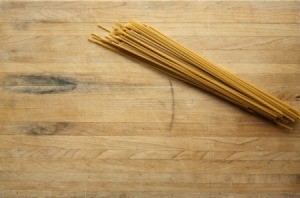 What do I put on a butcher block table after I clean it?
What do I put on a butcher block table after I clean it?
By Don from Massapequa Park, NY
Clean using about 1/2 cup peroxide, 1 cup water and a tablespoon or so of dish detergent, with a soft to medium brush or a "magic eraser", repeat 'til entire item is clean. If necessary you can up the peroxide. Rinse, wipe dry and allow to dry rather well. Then coat with mineral oil (liberally). Let sit a couple of hours or overnight, then wipe off excess oil. Never use any non-food cleaner, sealer or oil, if the block is for food prep. I've had mine for 30 years, and expect many more years of use. (It is safe to use peroxide, especially when the item is rinsed and air dried.)
ThriftyFun is one of the longest running frugal living communities on the Internet. These are archives of older discussions.
I just purchased an old (I am guessing at least 40 years) butcher block wood table. It is worn and very dirty around the edges. I would like to clean it.
What products can I use to clean old butcher block?